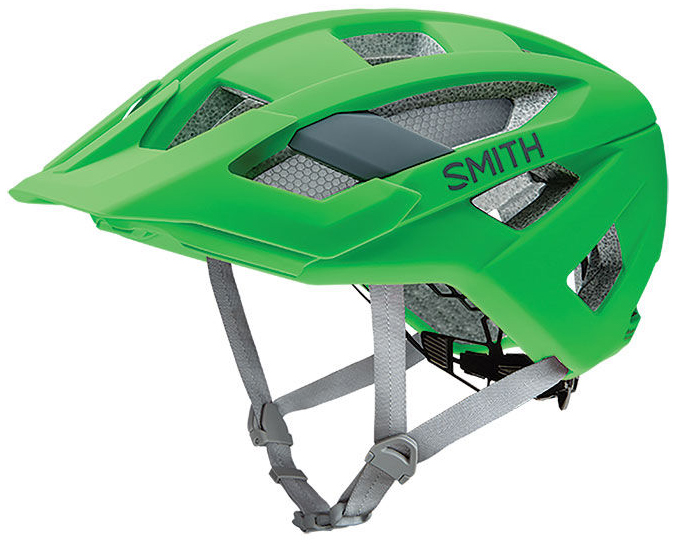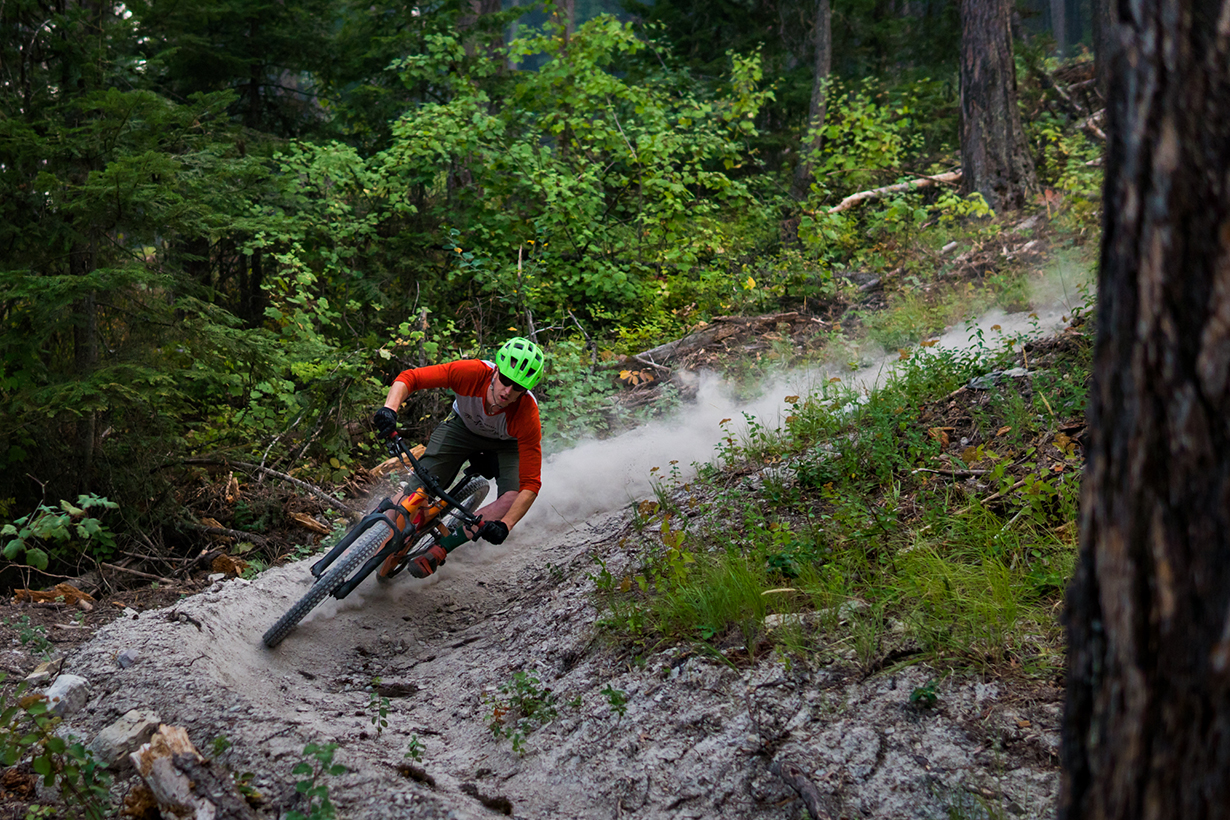
Smith Rover
Size Tested: Medium
Blister’s Measured Weight: 352 g
Color: Matte Reactor
Stated Features:
- Lightweight Aerocore™ In-Mold Construction
- Zonal Ventilated Protection Featuring Patented Koroyd™ Material
- MIPS system available in all colors
- VaporFit™ Adjustable Fit System
- 18 Optimized Vents
- X-Static with Reactive Cooling Performance Lining
- Ultra-Light Single Layer Webbing
- AirEvac Ventilation
Reviewer: 5’9” 155lbs, Head circumference: 57 cm
MSRP: $120
Test Locations: Montana, Colorado, Idaho, Wyoming
Test Duration: ~3 months
Intro
We took a look at the Smith Forefront helmet a few years ago, and the Forefront remains Smith’s top-of-the-line bike helmet. But not everyone’s keen on dropping $250 for a helmet, and that’s where the Rover comes in. At $150 for the MIPS version of the Rover, and $120 for the non-MIPS version that I tested, it’s decidedly more affordable.
The Rover shares some of the features of the Forefront, but it’s scaled back in a few respects. So how does it compare?
Fit
I say this in literally every helmet review, so if you’re binge-reading Blister helmet reviews this is going to get redundant, but helmet fit is hugely important. It doesn’t matter how much a helmet costs, how fantastic the paint job is, or what fancy gadgetry has been incorporated into it — if it doesn’t fit well, it’s not going to properly protect you in a crash. I question the logic of anyone who’s willing to throw a bunch of money at a helmet without first ensuring that it fits correctly.
The Rover fits a smidge on the rounder side of things, meaning it’s a little wider side to side than average. This puts it in line with helmets from Sweet Protection, but it’s not quite as round as helmets from Bell.
Almost every helmet on the market these days has some sort of internal fitment system that helps keep the helmet comfortably situated on one’s head, and the Rover’s “Vaporfit” system is no different. A dial in the back makes snugging the helmet onto your head quick and easy, and like most head retention systems, it has a few positions to accommodate different shaped heads and different hairstyles. No complaints here — the helmet stayed put just fine, and didn’t bounce around on even the roughest descents.
Construction / Safety
The Rover comes in two versions — one with MIPS, and one without. While the version we tested lacked MIPS, I would generally recommend the MIPS version to anyone who’s buying a helmet for safety as opposed to fashion, which I’m hoping is most of you.
If you’re not familiar with MIPS, you can read more about it here, but essentially, it’s a slip plane inside the helmet that helps minimize the negative effects of rotational impacts. Basically, if your head hits the ground at a funny angle in a crash, that can cause your head to momentarily rotate very quickly, which is bad for your brain. MIPS is designed to minimize that rotation, and thus reduce your chance of a brain injury. The downsides of MIPS are basically that it costs more (in this case $30), and helmets with MIPS tend to run a bit hotter.
Aside from the MIPS feature, the Rover is primarily constructed out of EPS (expanded polystyrene), which is what the vast majority of helmets on the market are made out of. The Rover also has two panels (one on either side) that are made of Koroyd, which is essentially a bunch of little straws stuck together into a web.
The idea behind both EPS and Koroyd is that they crush in an impact, thus dissipating the energy that otherwise would be going into your skull. The main upside of Koroyd is that it offers similar crash protection to EPS, but the straws allow air to pass through, and thus it makes for a more breathable helmet. The downside? It’s expensive, and some studies have indicated that it’s not quite as good at dissipating force (although the Rover passes all helmet certification tests, so that’s not to say it’s “unsafe”).

The other, perhaps more important downside of the Koroyd in the Rover is that the panels are pressed into the EPS foam that comprises the majority of the helmet, and on my helmet, the Koroyd panels came loose. This wasn’t in a crash or due to any kind of abuse — they just came a bit loose after a couple months of regular use. They’re still “captured” in there by the EPS mold, so they’re not rattling around, and they’re not going to fall out. But if I push on them, I can move them around. I’m not sure what effect that would have in a crash, but it’s certainly not ideal.
And to be perfectly honest, this bothers me. The Koroyd panels aren’t a huge or integral part of the Rover like they are in the Forefront, so it’s tough not to arrive at the conclusion that they’re primarily there to differentiate the helmet from any number of polystyrene options on the market. And that, in and of itself, isn’t a problem — being different is fine, but being different in a way that jeopardizes the ultimate safety of a product that exists for the sole purpose of increasing safety is problematic.
Putting the Koroyd issue aside for a moment, in terms of coverage, the Rover is decent. There’s some bigger, burlier helmets that come down further in the back, but for a Trail helmet, the Rover is about average. It comes a bit lower in the front than many helmets, so in terms of coverage for a trail-oriented helmet, the Rover does fairly well.
On-Trail Performance
The most noticeable thing about the Rover is that it breathes quite well. Sure, there are super-ventilated XC and Road helmets that run cooler, but for a Trail helmet that has good coverage and a bit more meat to it than some of the swiss cheese options, the Rover moves air nicely. I rode in the Rover in temps up to around 100° F, and the Rover did a better job of keeping me cool than most trail-oriented helmets. I will say, however, that the version of the Rover that I used didn’t have MIPS, and I’d expect the MIPS version to run slightly hotter.
Straps on the Rover are pretty standard, but I found that the chin strap liked to loosen a bit over time, so every few rides I’d need to cinch it back down. The Rover’s straps are also adjustable around the ear, although personally, I’d prefer the less adjustable style of strap that lays flat against my face.
Padding on the inside of the helmet is relatively minimal, but it’s smartly placed to both keep things comfortable and absorb sweat. Bad helmets have pads that funnel sweat into my eyes, but the Rover was good in this regard.

The visor on the Rover isn’t adjustable, which I found to be slightly annoying since it sits just a little lower than I’d prefer — it cuts off the top of my field of view, and I occasionally found that I’d miss a low hanging branch that was obscured by the visor.
But all in all, I was pretty happy with the Rover from an “on-the-trail” perspective — I put in a lot of miles with the Rover on my head without complaint. I haven’t landed on my head while wearing it, so I don’t have any first-hand crash test dummy results to report.
Bottom Line
Throughout the summer, the Rover was the helmet I reached for when temperatures climbed into the “why the hell am I trying to ride in this” territory. Great ventilation and solid sweat management make the Rover a winner when things get hot and messy.
I do, however, question whether the Rover’s Koroyd panels are ultimately beneficial. While they undoubtedly help with ventilation, they came loose in my helmet, which certainly seems to be a safety concern.
The Rover has a lot going for it, but I’d like to see a better integration of the Koroyd material before I’d recommend this helmet. And really, that better integration might look a lot like a helmet that already exists in the Forefront.
